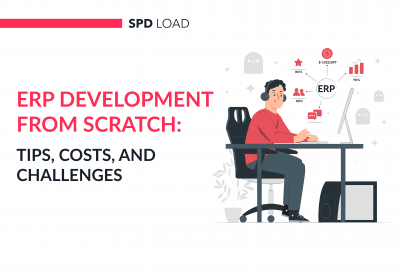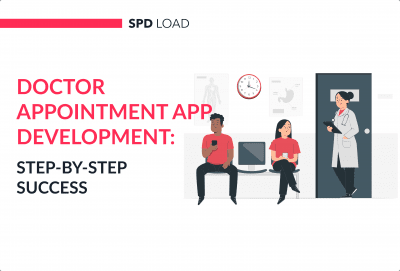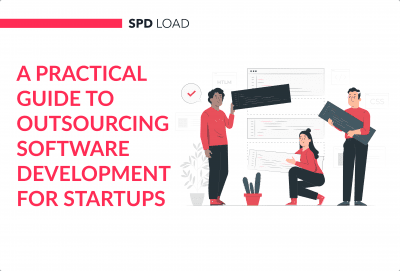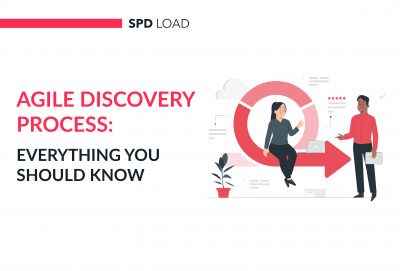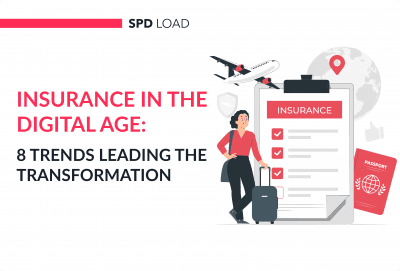How Long Does It Take to Build an App (Full Breakdown)
- Updated: Aug 27, 2024
- 9 min
So, how long does it take to make an app?
To answer this question, we need to understand the stages of app development and the factors that impact timelines.
If we compare apps by complexity and features, average development times are:
- Simple App – 2-4 months
- Average App – 4-6 months
- Complex App – 9+ months
Timelines may vary due to product complexity, final structure, and development partner.
In this article, we’ll explore these timeline factors and define mobile app development timelines from scratch with examples.
If you prefer visuals, check out the bonus infographic.
The cost of developing an app can vary widely. Get a clear idea of what to expect with our guide to app development costs.
Unlock your startup potential now — start transforming your vision into a scalable solution with our expert developers today!
How Long Does App Development Take?
The development time for mobile apps can vary from 4 to 6 months, depending on the app’s complexity.
| App Type | Estimated time |
| Simple App Development | 2-4 months |
| Average App Development | 4-6 months |
| Complex App Development | 9+ months |
Simple App Example
Simple applications typically have no more than five screens, do not exchange data with other databases, do not collect user analytics, and register users by email.
Examples of simple apps are business cards that contain the company’s info.
Average App Example
The average complexity app usually has about ten screens, a personal account, authorization through social networks, integrations with a server or a website, and payment systems.
Examples include most online stores and booking systems or applications based on an application builder.
Complex App Example
Complex apps include applications that can support real-time synchronization, interactivity, integration with databases, animation, work with downloaded data, and much more.
Examples are popular social media apps like Instagram and TikTok.
Now let’s find more examples of what impacts the development timeline. 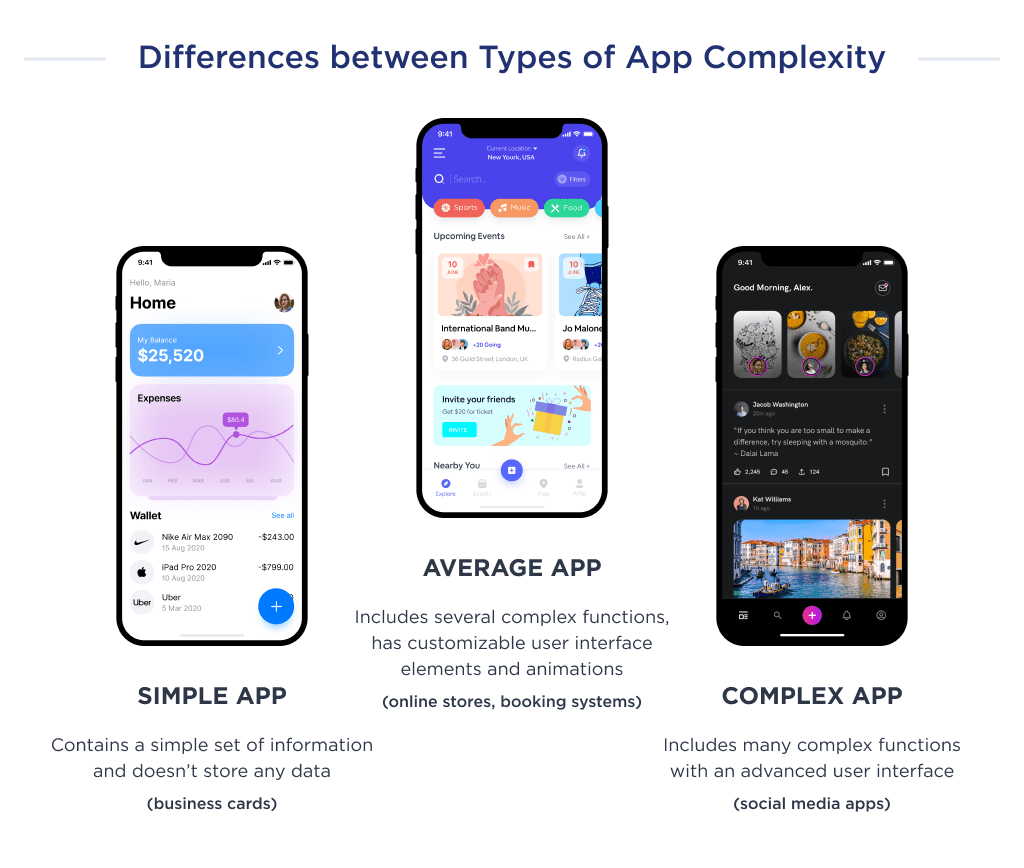
App Development Time by Type
To provide better clarity, let’s consider three different types of mobile apps and their development timelines.
-
Healthcare App Development Timeline
Today, keeping track of your health has become easier thanks to numerous online diaries, calendars, and other smart mobile apps designed to store and analyze our body data.
Some of the most popular healthcare apps include MyFitnessPal, Happify, SleepCycle Alarm Clock, and Medisafe.
On average, healthcare app development takes from 6 to 9 months. Usually, it requires a team of healthcare experts, compliance with HIPAA (Health Insurance Portability and Accountability Act), and the development of such features as:
- Integration with real-time heart rate
- Integration with electronic health records
- EHR
- Built-in messaging system
- HIPAA Compliance
- Telemedicine
- Goal setting
- Daily advice
- Progress tracking
Looking for innovation in healthcare? Here are some of the best healthcare startups leading the way.
Stay compliant and secure with these best HIPAA-compliant chat apps available today. 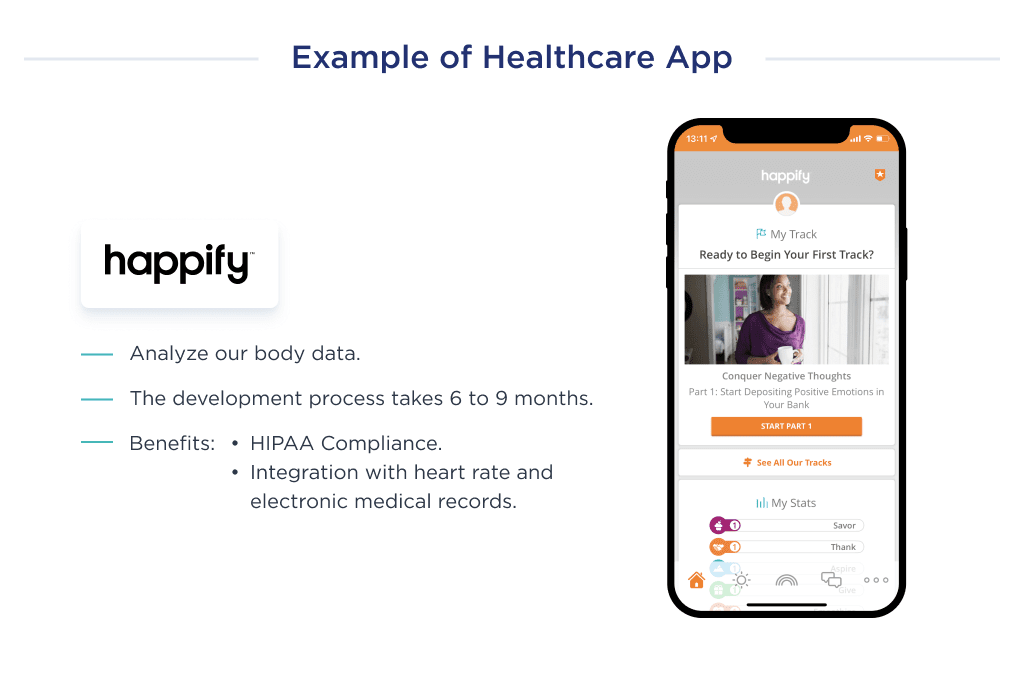
-
Education App Development Timeline
With the growing popularity of online learning, ed tech startups are now offering courses for users of all ages.
The most popular educational apps are Khan Academy, Duolingo, SoloLearn, edX, and Google Classroom.
On average, educational app development takes from 4 to 8 months, depending on the number of features and integrations. The e-learning app usually consists of the following features:
- Screen sharing
- Session Recording
- In-session chats
- Streaming
- File sharing
- Chat admins
- Polls
- Breakout rules
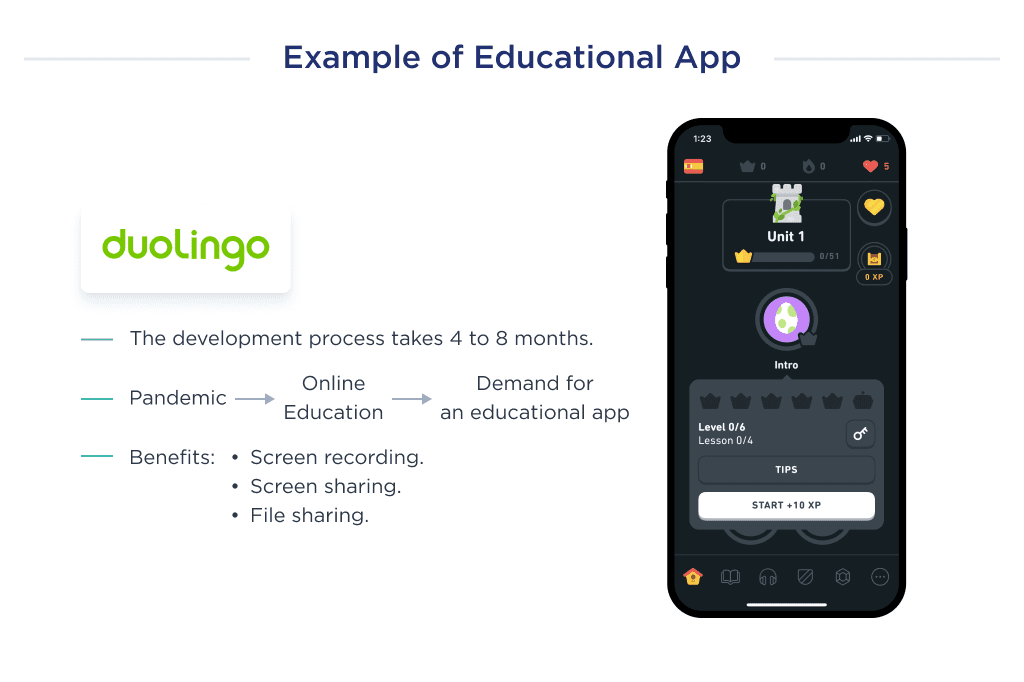
-
Food Delivery App Development Timeline
Since the pandemic, the competition for food delivery apps has been very high. More people prefer to order food online to save precious time instead of going to grocery stores and restaurants.
UberEats, Deliveroo, DoorDash, Seamless, and GrubHub are the most popular food delivery apps.
On average, food delivery app development takes 4 to 6 months, depending on the complexity, advanced features, and type of development platform. Usually, it includes such features:
- Map integration
- View cart
- Push notifications and alerts
- Social media integrations
- Tracking delivery system
- Tracking order status
- Restaurant filters
- Delivery tips
After you’ve decided on the app type, it is time to consider other factors that can significantly affect the development timeline. Let’s explore them in more detail. 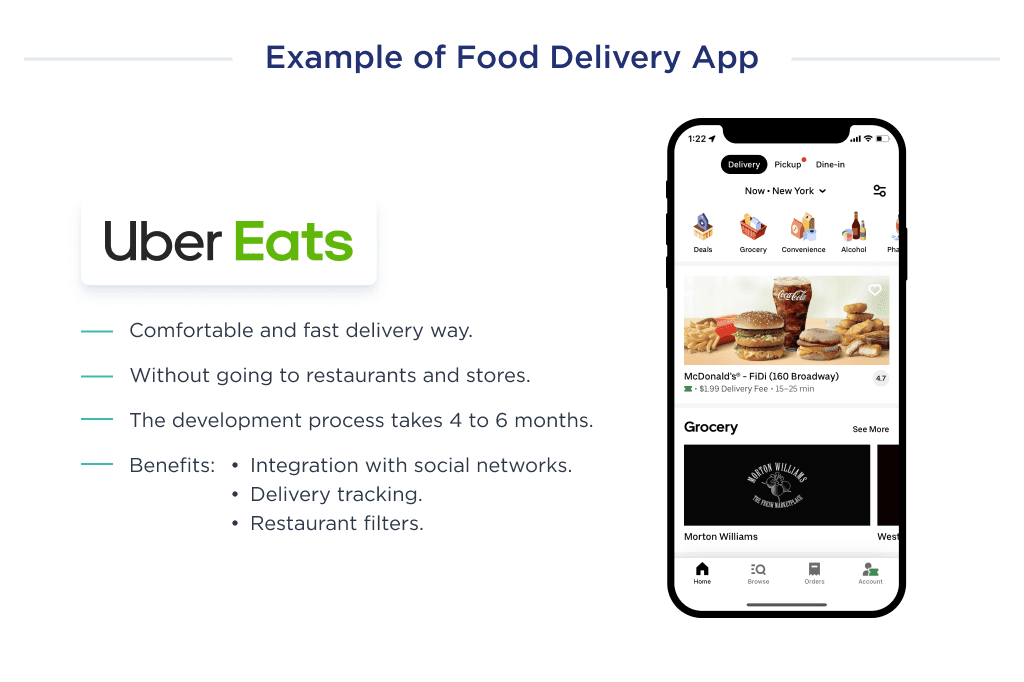
4 Factors Impacting Development Timeline
Here, we collected some factors that can affect app development and calculated their impact on the timing.
-
Idea Complexity
The main factor determining how long it takes to develop an app is its complexity. This includes elements like the number of screens, features, and roles within the product. The complexity of the app idea directly affects the amount of software development and design work needed.
Designing a simple app can take several weeks, while a complex one requires months. Subsequently, back-end and front-end development and testing. See how much does it cost to design an app for pricing breakdown.
The average time to build apps like Uber is about 1100 hours, while apps like Calm can take 880 hours.
However, building something unique, such as a SaaS, can take more than 1,200 hours.
-
Precise Requirements
A list of requirements outlines the main features and purpose of an app. The more detailed this list is, the faster the app can be built.
The time it takes to develop an app can change depending on factors like setting up the back end, choosing a content management system (CMS), and integrating third-party services.
Adding more features will increase both the time and cost of development, along with indirect expenses like project management or business analysis.
Below are some features founders look for solutions:
- Sign up through social media or email
- Chat or messaging
- Push notifications
- Portrait or landscape view
- Payment integration
- Maps integration
- User login and more
There can be additional features based on the type of application.
Building the necessary requirements in apps like chat applications can take 80 hours, while apps like Ads Manager can take more than 160 hours.
-
Result Accuracy
The documentation is essential to get an idea of the final goal and app development timeline.
The design team later uses this documentation when wireframing mockups. These are digital blueprints displaying how the minimum viable product will look.
Project documentation does two things:
Provides the information required to identify potential pitfalls.
Includes only essential functionalities.
If the final product requirements are not clear in the beginning, this will lead to more change requests in the middle of the project. Thus, utilize the agile methodology for product development.
When creating a wireframe, it is essential to address customers’ pain points while providing a unique user experience.
This is what happens during the process:
- As a team, you can use a digital wireframe tool to create a wireframe first.
- Then, you present it to the stakeholders for feedback on possible shortcomings.
- You make changes as per the suggestions.
- Repeat the process until you get the desired outcome.
Note that wireframes for a simple app like a meme generator may take 2-3 days to complete, depending on the project’s scope.
-
Business Expertise
If you are an expert in coding, then you only need assistance in product and design strategy. As a new entrepreneur, you’ll need guidance from start to finish.
There are other aspects as well. For instance, if recruiting an in-house team is part of your business model, consider the time it will take to hire and train the team for the project.
Only the design and development timeframe will be counted if you already have a team.
But if you have less time, hire developers or a product development company and share your mobile app development timeline. You will save a lot of time in this case. 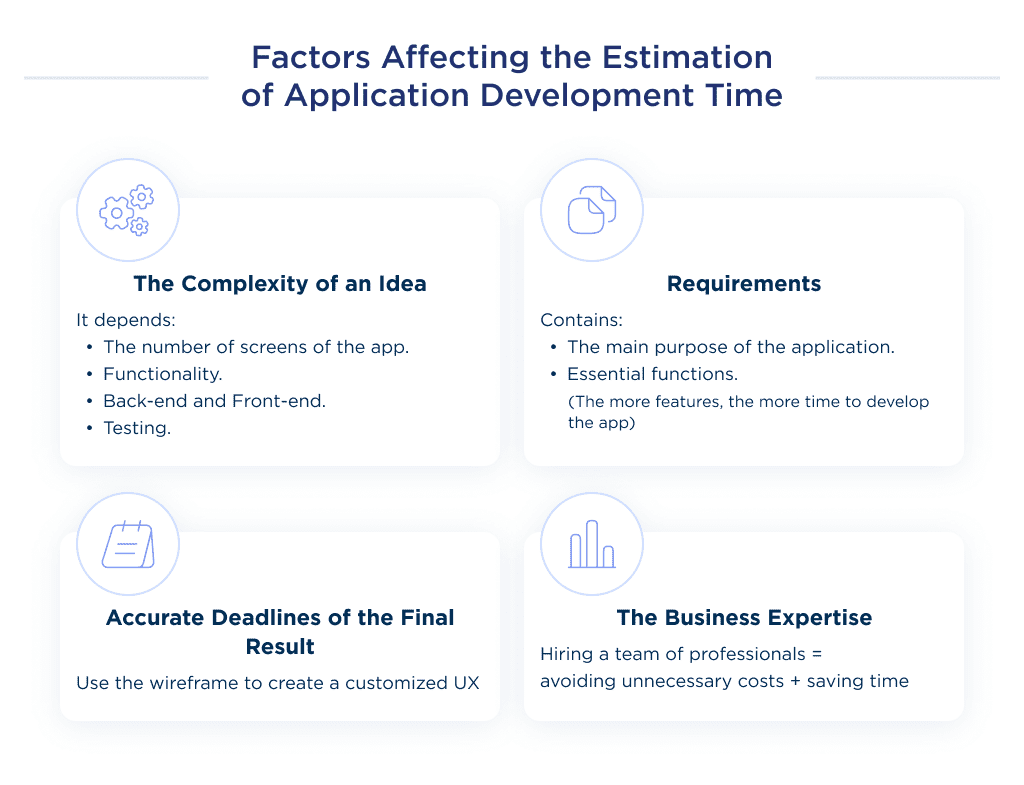
App Development Stages and Timelines
Every stage of app development determines the scope of a project and the process you need to follow.
That’s why you need to consider the time for each stage, starting with the planning of your app.
Before starting your project, these essential app development tips can help you avoid common pitfalls.
Explore our app development services today
Planning
It is the key stage in estimating the development timelines for an app. It focuses both on the development team and the customers.
This stage is important to establish and clarify the expectations for developing a project roadmap. It takes about 2-3 weeks.
At this point, you collect and analyze information about the project, the market, the competitors, and the audience.
The time to perform the product discovery phase varies. Here are some aspects that you need to focus on:
- Requirements and Specifications
Writing and handling specifications may take up to two weeks. To give you an initial idea, here are a few things you must add to the brief:
- Project goal and success metrics
- Request for proposal (RFP)
- Budget range
- Non-disclosure agreement
- Approximate date of delivery
- Design Low-Fidelity Wireframes
Low-fidelity wireframes are the initial visual representations of the product. They help designers and clients get a clear picture of the design and the product’s functionalities.
They are highly flexible, speeding up the app development process while reducing time and cost.
- Define the Tech Stack
It is also necessary to analyze the technology stack you will need to launch an MVP.
There are three main mobile app types of mobile app development projects: web, native, and hybrid.
A native app is developed for a mobile operating system (Objective-C, Swift for iOS app and Java, Kotlin for Android app), while a hybrid app is built using Flutter, React Native, Xamarin, and others. If you decide to build an iOS app, this guide on the best iOS app development tools covers everything from prototyping to testing.
If you’re planning to build an app, these detailed guides on Android app development costs and iOS app development costs will help you navigate the financial aspects.
The entire discovery process may take 40-80 hours of the app development timeline. For example, when we were developing MyWishApp, the discovery phase took us about 72 hours. 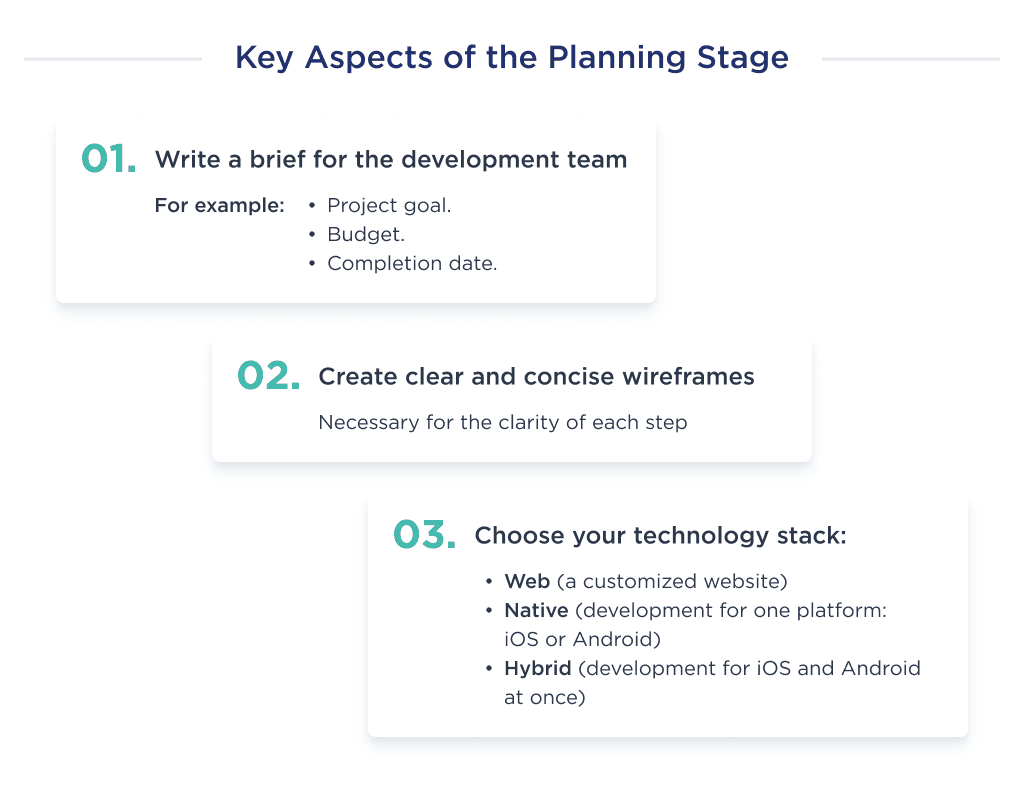
Design
During the app design process, you plan and refine the UI and UX design of the product. This process results in a blueprint that is then handed over to the app developers to begin building the application.
Let’s see what are the stages of designing an application.
- Create High-Fidelity Wireframes
High fidelity means a computer-made version that’s very close to the final product.
High-fidelity wireframes show testers what the product will really look like. First, low-fidelity wireframes match the story and content plan. Then, high-fidelity wireframes show the layout and order.
- Create UI Kit
The user interface components of the UI kit provide functionality to the users. Application elements like buttons, navigation buttons, checkboxes, widgets, and progress bars are all included in a UI kit.
Most importantly, UI kits incorporate all the UI design elements, so you don’t have to design them by yourself. They help ensure that your mobile app development stays on schedule.
The design stage takes about 40-80 hours in total. However, both planning and design stages can take from two weeks to 1 month.
For example, the UI/UX design process took us 150 hours for the app development project. 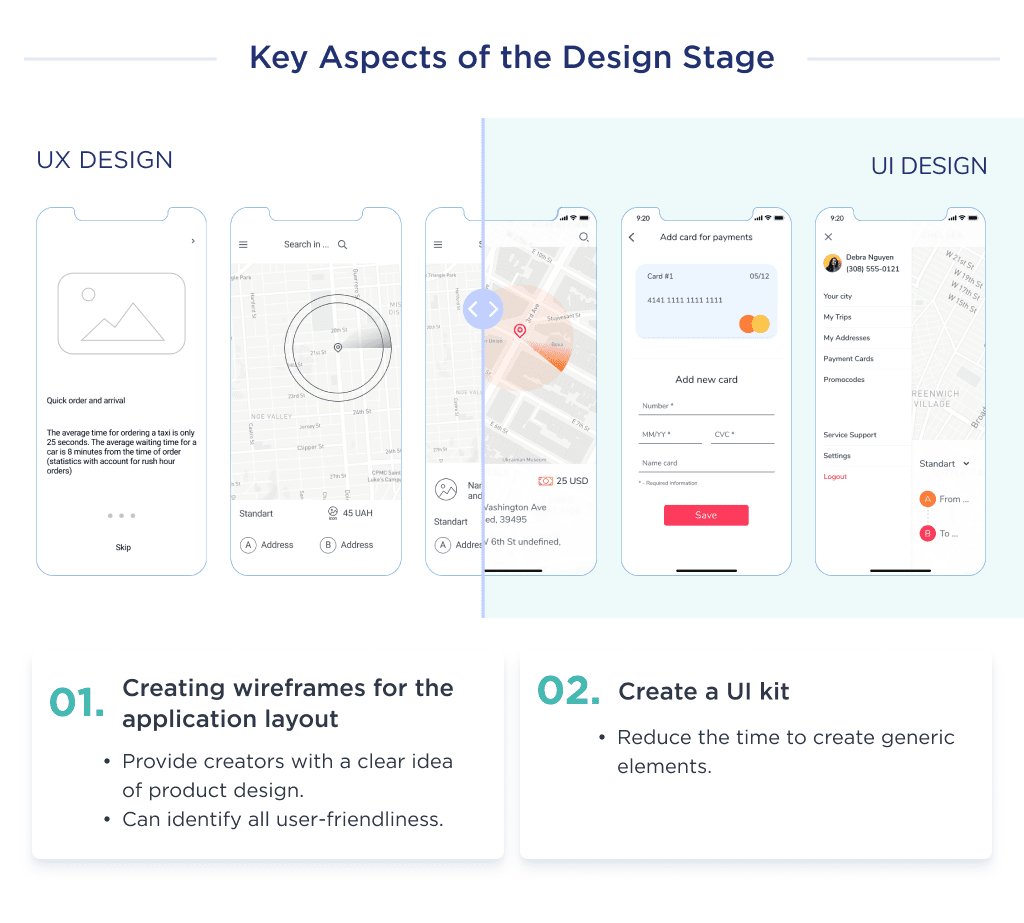
Development
The development phase is the core part of the app development process. It focuses mainly on the development of the front end and the back end. Besides, it includes beta testing and uploading process to app stores.
-
Backend Development
The back-end is the hidden part of an app responsible for storing data and providing security. It serves the same purpose as the server.
You can access it via the internet using API (Application Public Interface). Some commonly used alternatives for back-end servers are a custom server, a cloud server, and MBaaS.
The back-end includes the following components:
- Data storage
- Server-side logic
- Users management
- Versioning
- Data Integration
The storage capacity provided by the back-end can also be taken from a third-party company. You can also hire an in-house app back-end dedicated development team. But remember, not all apps require a back-end.
In our work, we faced an interesting situation. The founder of Videonext got in touch because they wanted to shift their website to the cloud.
The main hurdle was connecting the website’s back end to keep its features working.
Luckily, we overcame this challenge with the help of an API developed by the customer’s team.
You can read the entire case study about live video streaming app development.
The cloud migration discovery phase is essential for identifying potential risks and ensuring data integrity.
-
Front-end Development
The front-end of an application refers to all the visible elements that a user can interact with, such as buttons, menus, and screens. The front end of an app is everything that a user can see.
Front-end developers handle everything users see on a website or app, including how it looks and behaves. They use tools like CSS, HTML, and JavaScript.
Additionally, they ensure that the website or app works well on different devices and performs smoothly.
The front-end includes the following features:
- Front-end logic
- Synchronization
- Caching
- Wireframing
- UI design and development
Generally, the average time to develop an app varies from 3 months to launch an MVP and up to 9 months to scale it to a big product.
-
Testing
Testing is one of the concluding and critical phases of the app development process. It may take you anywhere between 4-6 weeks.
Utilizing efficient test automation tools can significantly streamline the process.
For the dating app project, QA testing took us 340 hours. 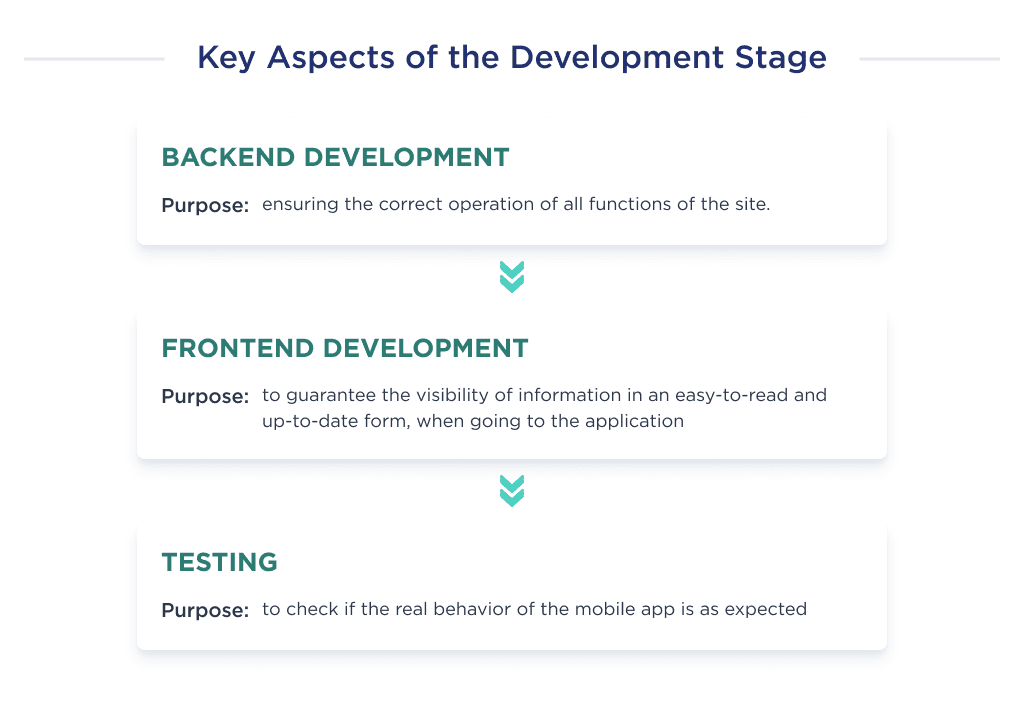
Next Steps
Building a successful app takes careful planning, design, and development.
If you want to create an app, share your requirements with us, and we’ll provide a timeline estimate.
Ready to get started?
Contact us today to discuss your app ideas. We’ll help you bring your vision to life on time and on budget.
Being a Clutch Leader in Ukraine speaks to our dedication and hard work in the software development field.
Bonus Infographic
Here, you’ll find a summary of our in-depth guide. Learn the highlights of the mobile app development timeline. 





